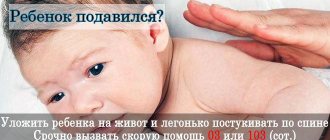What causes a cough with wheezing?
In fact, it is the body’s defense mechanism against pathogenic external influences.
And the resulting wheezing is the result of the formation of an increased amount of mucus or other obstruction in the respiratory tract.
Often such noises can be heard even without a phonendoscope . In adults and children, wheezing when breathing and coughing is a symptom of the development of conditions such as:
- laryngitis;
- pharyngitis;
- cold or ARVI.
Sometimes this is not a symptom of a disease, but simply a physiological act. For example, a person choked. Newborns cough because milk enters the bronchi. Young children can generally indulge in this way, attracting the attention of their parents.
Warning signs
Whistling when breathing never goes away without additional signs of illness. During the examination, it is important for a specialist to pay attention to noise in the bronchi .
They are fine-bubble, medium-bubble, and large-bubble. And they can talk about serious pathologies, especially dangerous for children in the first two years of life.
If a child is infected
If the baby suddenly begins to choke, and the barking sound of the voice does not go away, the signs intensify, you must immediately call an ambulance .
Before the medical team arrives, parents must :
- Check the presence or absence of a foreign body in the baby’s throat. If detected, ask the child to cough or try to remove the foreign object with his own efforts.
- If there is nothing, then try to give the patient more water.
- It is better to keep the babies vertically, that is, in a “column”.
- You can give antihistamines to relieve swelling.
It is imperative to start treatment on time , since in young children a common acute respiratory infection can develop into pneumonia literally within a day.
Important! Call your local pediatrician immediately, because the formation of whistles and noises is a risk of developing such serious conditions as whooping cough, influenza, rhinovirus infection, and pulmonary edema.
Alarm bells for an adult
A hoarse voice, as well as a strong cough with wheezing in an adult, develops in experienced smokers or people whose profession is associated with hazardous work .
or chronic bronchitis over time
A prolonged hoarse cough in an adult is a symptom of dangerous disorders that need to be diagnosed in time:
- bronchial asthma;
- malignant tumors;
- pneumonia;
- heart problems
Therefore, if the noises begin to bother you more and more, then you need to urgently contact a specialist. Only he can correctly identify the problem and fix it.
Causes of wheezing
The main reason for wheezing or other sounds when coughing is an obstruction in the path of inhaled air flow. In a healthy body, air moves freely through all parts of the respiratory system, and practically no sounds are heard. But in the presence of pathology, viral or bacterial infection, the air will encounter obstacles on its way - swelling, neoplasms, sputum clots, etc. Consequently, symptoms such as wheezing and coughing will be characteristic of the following diseases:
- ARVI;
- tracheitis;
- bronchitis;
- pneumonia;
- asthma;
- respiratory oncology;
- tuberculosis;
- diseases of the cardiovascular system;
- pulmonary edema;
- presence of a foreign object in the respiratory tract;
- internal bleeding.
Features of the development of the disease and diagnostic methods
There are dry and wet coughs . Dry passes without the formation of a secretion, it can be very severe, tearing the throat. He is accompanied by the beginning of ARVI .
But the reason often lies in laryngitis; dry wheezing in a child indicates a possible “ false croup ”. The latter provokes swelling of the larynx and is a serious condition.
Wet - accumulation of sputum in the upper respiratory tract. A good environment for the proliferation of pathogenic microorganisms. The mucus should not be allowed to linger inside, otherwise complications may begin.
Separately, it is worth mentioning allergies . An allergic cough goes hand in hand with it. It is paroxysmal in nature and is combined with other symptoms: lacrimation, sneezing, runny nose.
No sputum is produced, and no signs of severe inflammation are observed. Often occurs at night .
If a person has not suffered from allergies before, then it is worth observing their lifestyle: what is included in the diet, whether there are pets, maybe powders or cleaning products are to blame. If everything repeats at regular intervals, then the allergist will help identify the disturbing allergen and prescribe medications.
Dry and moist wheezing , especially if it occurs in children under one year of age, is a reason to immediately contact the clinic.
Diagnosis of the problem
The general practitioner begins examining the patient after listening to complaints. Using a phonendoscope, he determines the presence or absence of sounds that should not exist, their variety and type. Wet wheezing is likely to indicate bronchitis.
With acute respiratory infections, noises in the throat indicate the spread of infection to the larynx. The patient will complain of pain, soreness . Possible laryngitis.
Whistling in the lungs is often a residual phenomenon after a disease suffered on the legs or, conversely, a developing pathology, often serious: tuberculosis, asthma, lung cancer, even a heart attack or untreated pneumonia.
You can hear a dry cough and wheezing when exhaling - most likely it is a cold. The doctor must conduct a differential diagnosis with acute bronchitis, pneumonia, laryngeal edema, and heart failure.
Particular attention is paid to young patients, because wheezing in the sternum when exhaling in children can be a consequence of whooping cough, diphtheria and other infections; in medicine they are called expiratory.
The main thing is to exclude pneumonia in the patient . To do this, a chest x-ray is prescribed, and, if necessary, a blood test for C-reactive protein plus a general blood test.
What to do with the temperature
Temperature is present in almost all infectious diseases, as well as in the case of bacterial infection . What should I do?
Of course, the fever needs to be brought down . If we are talking about infants, then the fight begins at 38 degrees. Use suppositories based on paracetamol, ibuprofen, and drink plenty of fluids.
Older children can be given Nimulid, Panadol, and other antipyretics.
Men and women can use paracetamol, Fervex, Coldrex, etc.
But what if there are symptoms but no fever? Then the doctor suggests several options: pneumonia, asthma, tuberculosis, heart disease. In any case, one inspection is not enough. Additional tests are prescribed: ECG, ultrasound, allergen tests, etc.
What are the types of wheezing and cough?
For a correct diagnosis, determining the type of wheezing plays an important role, which experts divide into several categories.
Dry wheezing
Dry wheezing is characteristic of infections that affect the tissues of the bronchi, which subsequently leads to a narrowing of their lumen. The sound of dry wheezing resembles the buzzing of a bee; this sound occurs as a result of the passage of air through a narrowed bronchial lumen. Dry wheezing wheezing is characteristic of the following diseases:
- Obstructive bronchitis.
- Bronchial asthma.
- Pneumosclerosis.
- Bronchiolitis.
- Bronchospasm.
The severity of the pathological condition can be determined by the volume of the buzzing wheeze: the louder the sound, the stronger the inflammatory process in the bronchial tissue, which caused a narrowing of the lumen of the bronchi.
Wet wheezing
Characteristic moist rales are most often accompanied by an infectious lesion of the bronchopulmonary system, since pathologies of the lower respiratory tract are often accompanied by the release of a viscous mucous secretion - sputum. At the moment of inhalation, the air flow encounters mucous masses on its path, which produce a sound reminiscent of bursting bubbles. Such popping sounds are especially audible when inhaling, and moist wheezing can also be accompanied by creaking and whistling.
Pulmonologists divide wet wheezing into several subcategories:
- Fine bubbling rales. As you can easily guess from the name, the sounds will resemble the hissing of small bubbles, for example, like in a bottle of carbonated drink. This subtype of wheezing is characteristic of pneumonia and pulmonary infarction.
- Medium bubbling rales. The type of wheezing, which will resemble the sound of gurgling water during boiling, is characteristic of hypersecretory bronchitis and pneumosclerosis.
- Large bubbling rales. In this case, the characteristic seething sound will be heard even at a distance, and indicates a serious pathological process in the body.
Wheezing on exhalation and inhalation
As noted earlier, wheezing during inspiration is characteristic of diseases of the lower respiratory system, which are accompanied by copious sputum production. These diseases include the following:
- ARVI;
- flu;
- bronchitis;
- pneumonia;
- bronchial asthma;
- diseases of the cardiovascular system;
- tuberculosis;
- neoplasms in the lungs or bronchi.
Naturally, this list includes a huge variety of diseases and pathologies, but above are the most common causes of coughing and wet wheezing.
Dry wheezing, in turn, can occur both during inhalation and during exhalation. Dry hoarseness is a characteristic symptom for the following diseases:
Traditional methods of treating dry cough with wheezing in adults
Alternative medicine is an additional element in the fight against pathogenic agents. And I must say, very effective. The choice is large: decoctions, teas, tinctures, warmings - everything that the soul has learned. But without fanaticism.
Important! People with chronic heart and kidney diseases and allergies should consult a doctor before using any folk remedies.
Top recipes for coughs with wheezing:
- Carrots for phlegm removal . Pass fresh carrots through a blender to obtain juice. Or use a ready-made one. Add two teaspoons of honey. Take a tablespoon up to four times a day for a week.
- Tangerine peel . Peel two tangerines and chop the peel. Add half a liter of boiling water and a little vodka. Leave for 4 hours. Strain and drink a teaspoon 5 times a day for 7 days.
- Herbs against bronchitis . Mix coltsfoot leaves, licorice, plantain and dandelion in equal parts, pour a liter of boiling water and let it brew in a dark room for a couple of hours. Take in small portions (less than a glass) three times a day after meals. Course of treatment – two weeks
An old, well-known recipe will do here - “ breathe over a pot of potatoes .” You can drink tea from special medicinal herbs, which are sold in pharmacies, or take a bath with young pine cones.
How is wheezing in the chest treated?
To prescribe treatment for cough, hoarseness and hoarseness in the chest, the specialist examines the chest with a stethoscope and, if necessary, takes an x-ray. If an adult hears wheezing when breathing, you need to carry out warming procedures and drink a lot of warm liquid to get rid of mucus in the respiratory tract.
Sometimes patients may notice that they produce green or yellow sputum when they cough. This process indicates the penetration of a serious infection into the body and requires the use of antibiotics. When the vocal cords are involved in the inflammatory process, the voice becomes hoarse and it is difficult for the patient to speak. Treatment of hoarseness from a cold can be done using folk remedies - eucalyptus and lavender oils, warm milk, honey.
If you have questions for your doctor, please ask them on the consultation page. To do this, click on the button:
Bronchial diseases are one of the most common causes of the development of pathologies of the respiratory system. In this case, the patient notes wheezing when inhaling and coughing attacks. In addition, symptoms include heaviness and burning in the sternum, general weakness. But such a clinical picture may indicate pneumonia and tuberculosis.
If a person has wheezing when inhaling and coughing, then these symptoms may indicate a number of diseases. These include pneumonia, insufficient functioning of the lungs, heart, and tuberculosis. Wheezing with bronchitis is very clearly noticeable. In the acute course of the pathological process, these wheezing can be heard not only by the patient himself, but also by the person next to him.
A person may experience a cough with wheezing when he or she has a life-threatening allergy. Thus, attacks can occur as a defensive reaction to the penetration of a foreign body into the respiratory tract.
Most often this applies to young patients. Children are always trying to taste something, as a result of which various small parts can penetrate into their narrow airways. Thus, an inflammatory process begins to develop, during which the obstruction will increase at a high rate. In this case, you cannot hesitate; you need to help the patient as quickly as possible.
A nonproductive cough, which is characterized by wheezing, can occur in a baby after prolonged inhalation of polluted air. Thus, it is necessary to protect the baby from such walks, and also make sure that he does not breathe smoke from cigarettes. It also negatively affects any adult.
Often the baby has difficulty breathing due to diseases of the respiratory system. In this case, you need to show the child to a doctor so that he can understand the cause of the development of the pathological process and prescribe effective treatment.
Treatment methods for wheezing in children
Treatment tactics depend on the underlying disease . For acute respiratory viral infections, antiviral drugs are used, such as Viferon, Genferon, Arbidol, etc.
If there is excessive accumulation of mucus, they try their best to make the sputum more liquid. For this purpose, medications based on natural ingredients :
- "Doctor Mom";
- "Gedelix".
most popular mucolytics are :
- "Ambrobene";
- "Erespal";
- "Stoptussin";
- "Bromhexine."
These medications are alternated with inhalations. Use a nebulizer with mineral water, various herbs or infusions, such as eucalyptus. Or with these solutions to choose from :
- "Lazolvan";
- "Berudual"
- "Pulmicort".
However, only a pediatrician can tell you what dose to use and how to use it correctly.
Important! Do not use inhalations if you have a high temperature, cough with blood, or have sputum with pus.
Traditional methods
The healing effects of traditional medicine should be used with caution for children under three years of age .
may help :
- Dilute half a glass of sugar in half a glass of plain water. Grate a small onion into the contents and place on low heat. Cook a little. Cool and give the patient 1 tbsp. spoon or teaspoon depending on the age of the child three times a day after meals.
- Place four dessert spoons of lemon juice in 100 grams of fresh honey, add 50 ml of milk, stir well. Take a tablespoon twice a day. Before going to bed at night, you can take two spoons.
Herbal medicine also gives positive results . For example , you can buy elecampane at a pharmacy. This is a medicinal flower; a decoction is made from it and given according to the instructions.
It is good to make tea with sage or chamomile. And propolis tincture can be added to boiled water and moistened the throat.
Compresses of various types are an additional aid in the treatment of cough with wheezing. They will help in a situation where there is no wheezing, but there is a cough.
Compress without age restrictions - cabbage with honey. Take a cabbage leaf and cut it lightly with a knife to release the juice. Spread a layer of honey on it and fix it on the outside of the chest. Leave it overnight.
A compress with lard, as well as boiled potatoes, helps a lot.
It is useful for babies to hover their legs. Warm water in a basin, but not too hot so that the baby doesn’t get burned. Add pine cones if you can find them. You need to sit in such a bath for at least 10 minutes.
Treatment with medications
When choosing medications, you need to pay attention to contraindications and side effects.
After the final diagnosis is made, the patient is prescribed a course of the most appropriate drug therapy. In mild cases, treatment at home is acceptable.
Regardless of the chosen technique, strict adherence to bed rest is necessary. Complete rest, rest, correctly chosen position in which it is easier to breathe - all these aspects have almost a leading role in the treatment process.
Effect of drugs
If wheezing is a consequence of the accumulation of pathogenic mucus in the tissues of the bronchi, it is necessary to take medications that effectively reduce the viscosity of sputum and dilute it. Thanks to this, natural cleansing of the respiratory system occurs.
It is also possible to prescribe medications that stimulate the activity of the muscle tissues of the respiratory organs. This provokes coughing attacks, with the help of which the bronchi are cleansed of mucus.
Criterias of choice
It must be remembered that when choosing the most suitable medication, you should be guided by three important aspects: price, composition, instructions. You should carefully read the recommendations regarding the dosage of the drug, as well as contraindications and possible side effects.
Advice! It is advisable to choose cough remedies that are based primarily on components of natural, that is, plant origin. They are safer and no less effective. In addition, their cost is noticeably lower than the exorbitant prices of completely chemical analogues.
Folk remedies
Hot tea will help stop a coughing attack and also reduce discomfort.
Cough with wheezing in adults can be quite successfully treated using well-known methods of alternative treatment. Various combinations of medicinal herbs (see Herbs for coughs: which ones can be used), inhalations with essential oils, heating - all of these procedures not only suppress pathogenic microflora, but also strengthen the immune system.
In addition, they are almost completely harmless and do not have a negative effect on the digestive tract, which is possible when taking medications.
Advice! Before taking any homemade product, you must make sure that there is no risk of developing allergic reactions. Honey, herbs, and other products, which are often the main components in traditional treatment recipes, are the strongest allergens.
Phytotherapy
Infusions and decoctions based on various medicinal herbs have been used in folk medicine for centuries. Thanks to many years of experience of generations, plants have been identified that not only eliminate cough and wheezing, as well as other manifestations of colds and infectious diseases, but also strengthen the body’s natural protective barrier.
Photo materials and videos in this article will help you become more familiar with the methods of alternative therapy.
As for the most popular and effective recipes based on medicinal herbs, the following should be listed:
- Oregano – perfectly thins phlegm, helping to effectively cleanse the respiratory tract of pathogenic mucus.
- Mint – has powerful antimicrobial and anti-inflammatory properties, softens irritated mucous tissues, and activates cell regeneration processes.
- St. John's wort - provokes the separation of sputum from the walls of the bronchi, fights not only the manifestations of a dry cough, but also the reasons that caused its appearance.
- Coltsfoot - the pronounced anti-inflammatory effect of this modest plant allows it to be used in the treatment of not only colds, but also bronchitis and pneumonia.
- Licorice. The roots of the plant are used in both folk and traditional medicine. It has a pronounced expectorant effect, helps to thin sputum, and prevents its thickening.
Advice! When preparing a herbal decoction, you can also add a little dry chamomile or rose hips to it. This will help saturate the body with much-needed vitamins and nutrients, and also strengthen the immune system.
Inhalations
If an adult begins to have a hoarse cough, in which it is difficult to clear sputum, it is quite possible to carry out a procedure such as inhalation. For this purpose, you can use a nebulizer, or do without this device, simply inhaling the vapor of hot herbal decoctions.
You can prepare a decoction for inhalation based on herbs such as calendula, chamomile, mint, and linden blossom. If you don’t want to bother with dry ingredients and preparing the mixture, you can use essential oils. The best choice is eucalyptus oil, which not only helps to gently cleanse the respiratory tract, but also has a disinfectant and anti-inflammatory effect.
Warming up
They are excellent for helping to get rid of wheezing and dry cough by warming the chest and back. Warming up the calf area is also very effective. To carry out the procedure, you should use mustard plasters. You can also use another method, for example, generously smear the chest and back area with melted lard of animal origin, and then wrap this area in warm woolen cloth.
It is advisable to carry out the warming up procedure before going to bed, since after it it is not recommended to leave the warm room for at least three hours. In addition, if animal fat is used, it is quite possible to leave this warming compress on all night. In the initial stages of respiratory tract diseases, a couple of procedures will be enough for an almost complete recovery.
Advice! It must be remembered that warming should not be carried out by persons with various dermatological diseases, heart diseases and vascular diseases. Such contraindications should not be ignored, since heating in such cases can significantly aggravate the patient’s condition.
Foot baths
Warming the feet is an excellent procedure that can be used in the complex treatment of colds and viral diseases. This method causes increased blood circulation, which helps improve the natural cleansing process of the lungs. However, it should not be used at high temperatures.
When preparing a bath, you can use regular hot water. And to improve the effectiveness of the procedure, you can add a little soda or a couple of drops of eucalyptus essential oil to the water. This measure will help not only warm your feet, but also breathe in hot healing steam.
Prevention
To prevent an ordinary cough from developing into an acute or chronic illness, you need to stop the underlying disease in time . It is important to prevent the development of wheezing. Therefore, if you or your child has a cold or caught a virus, then the general rules are as follows:
- Drink plenty of fluids.
- Clean, cool air in the room.
- Conscientious use of prescribed medications.
In addition, try to toughen up, lead a healthy lifestyle, eat right and exercise as a family.
Be healthy!
Treatment for hoarse cough
Symptoms of this cough can occur in both children and adults.
The approach to treatment will be largely the same - it depends on what disease is causing the described symptoms. If coughing and wheezing are caused, for example, by laryngitis, then in this case the main thing is to relieve swelling of the larynx in order to expand the lumen of the respiratory tract to a normal state. To do this, the doctor prescribes antihistamines (they reduce swelling), and the patient is given a lot of warm drinks (the best is milk with honey or Borjomi).
Almost always, with a severe cough, all medications prescribed by doctors are aimed at relieving symptoms. At this time, it is necessary to clear the airways of mucus. But all drugs do this differently.
In general, they can be divided into two main groups:
- centrally acting cough medicines. They act directly on the cough center located in the medulla oblongata and have an analgesic and calming effect;
- drugs of peripheral action - roughly speaking, they dilute mucus and speed up its removal from the body. These include drops and sprays that moisturize mucous membranes, as well as inhalers. Such drops may contain sea water or salt (highly purified) and iodine.
Peripheral medications also include enveloping agents, represented by syrups, herbal mixtures containing extracts of menthol and eucalyptus. And this group also includes mucolytics, which thin out mucus so that it is easier to remove from the body.
In addition, there are combination drugs. They may have vasoconstrictor, mucolytic and at the same time antihistamine properties.
If the cough was caused by a bacterial infection, antibiotics may be used to treat it. But how do you know if the problem is caused by an infection? In such cases, a wheezing cough continues for a long time, the mucus in the throat does not liquefy for a long time, and after taking mucolytics it still comes out and looks like a greenish or yellowish substance. This color and structure indicate the presence of a bacterial infection - it can be treated with antibiotics, but only after consulting a doctor.
In addition to drug treatment, the patient’s lifestyle matters. The smoker will have to quit his bad habit.
Many people believe that this should be done only for the duration of treatment, and then you can return to your previous habits. But this is not true, you need to quit smoking once and for all, otherwise the cough will return.
A dry, hoarse cough may indicate that too little water is entering the body. Therefore, it is necessary to ensure a normal drinking regime, which will include warm tea, cranberry juice, and various compotes.
The air in the room should also not be dry. Therefore, it is recommended to purchase a humidifier. Preventive breathing exercises will also be useful.
How effective are folk remedies? Doctors advise taking them simultaneously with the main course of treatment. There are many recipes for herbal remedies and inhalations, but they all simply help to muffle unpleasant sensations and do not eliminate the source of their occurrence.
How to treat hoarse cough in children?
To relieve cough, reduce swelling and pain in the throat and restore your voice before seeing a doctor and making a diagnosis, you can resort to traditional medicine. There are such means:
- Inhalations
. Inhalations at home can be done by allowing the child to breathe hot steam. To increase efficiency, you need to wrap your head in a warm blanket over a source of steam. There are several recipes for inhalation at home. The most famous inhalation is boiled potatoes. It should not even be peeled before boiling, as the steam will contain more useful substances. Or you can simply heat the water, add one teaspoon each of salt and soda and a few drops of eucalyptus oil. You can also brew sage, chamomile and thyme, one teaspoon per one and a half liters of water and breathe in the resulting steam. Such decoctions treat bronchitis and other diseases of the larynx. - Warm, plenty of drink
. Drinking plenty of fluids will speed up the removal of toxins from the body and help relieve symptoms. You can drink weak tea with lemon, thyme and oregano, or warm milk with honey. - If you have a hoarse cough, you need to rub your back and chest with warming ointments
: Doctor Mom, Gold Star.
After making a diagnosis, the doctor will prescribe medication with cough tablets or syrups: Erespal, Sinekod, Ambrobene, Bromhexine. These medications should be taken strictly as prescribed by your doctor.
What to treat in adults
If an adult constantly feels wheezing when inhaling and coughing attacks, then it is worth delaying visiting a doctor. He must conduct an examination, prescribe a diagnosis and understand what led to the development of the pathological process. Based on the results of the analysis and the clinical picture, he will be able to formulate an effective treatment. Drug therapy
But what pills for loss of voice and hoarseness exist and which of them are the most effective, this article will help you understand.
Information from the article will help you understand what to do when your voice becomes hoarse after a cold.
But what to do when a child has a hoarse voice and what means should be resorted to first is described in this article.
Since wheezing in the lungs is the result of an inflammatory process in the body, therapy must necessarily include taking antibacterial drugs.
For pneumonia, your doctor may prescribe the following medications:
Kanamycin for injection
Ceftriaxone for injection
The medications presented are most often used as injections, since they are the ones that are best absorbed by the patient’s body. Antibacterial therapy is prescribed when inflammation occurs without fever. In addition to antibiotics, agents may be used whose action is aimed at diluting viscous and dense sputum with purulent content.
This may include the following medications:
Cysteine tablets
When the sputum becomes less viscous, the doctor prescribes expectorant medications, including:
Effervescent tablets ACC
But how to use ACC for dry cough is described in great detail in this article.
- Mucaltin (follow the link - instructions for using Mucaltin in tablets);
- Lazolvan.
Physiotherapy
If the cause of wheezing and coughing is pneumonia, then the therapeutic process is much easier. But then, in addition to prescribing medications, it is necessary to use massage and physiotherapy. This is an auxiliary method of therapy, the effect of which is aimed at improved blood circulation and active discharge of sputum.
Physiotherapy for adults
It is allowed to apply warm compresses to the chest. They will increase blood circulation in the bronchi and allow softened mucus to be eliminated as quickly as possible. You can also perform inhalations over steam. They reduce the viscosity of purulent secretion. For these trees, you can use a special device - a nebulizer, or simply take a bowl of hot water and add a couple of drops of any ether to it. But such activities are prohibited when the temperature is elevated.
Traditional methods
Adults can include folk remedies in their therapy regimen. They will improve his condition and speed up the recovery process. You can use decoctions of herbs such as chamomile, mint, calendula. It is very effective to steam your feet in a mustard solution. To do this, fill a bowl with hot water, place dry mustard powder and lower your hands.
Soars your feet for 15 minutes. Then put on socks, in which you also place mustard powder. Do this procedure at night. At home, you can perform inhalations with potatoes. Boil the vegetable in its skin without removing the peel. Lean over the steam and inhale it for 10 minutes.
Causes associated with diseases
The symptom clearly indicates the severity of the patient’s condition. The reasons for its occurrence are usually:
- Bronchial asthma;
- pharyngitis;
- tracheitis;
- laryngitis;
- bronchitis;
- allergic reaction;
- whooping cough;
- false croup;
- entry of a foreign object into the respiratory tract;
- stenosis;
- malignant neoplasm;
- tuberculosis;
- anaphylactic shock;
- pulmonary edema;
- injury;
- pneumonitis;
- diphtheria, etc.
Most often, these diseases cause a wheezing cough. Symptoms may vary for different pathologies.
With severe allergies, sometimes reaching anaphylactic shock, significant swelling occurs with the release of inflammatory exudate into the lumen of the bronchi. This makes it so difficult to breathe that the patient simply does not have enough air, which provokes characteristic wheezing.
This condition requires urgent medical attention. When emergency measures are taken, it goes away quite quickly. Read here on how to distinguish an allergic cough from any other and what medications to take.
An attack of bronchial asthma most often occurs at night, during sleep. The person coughs strainedly, trying to free himself from the difficulty that has arisen. But he fails to do this for a long time, until the spasm goes away on its own or the patient takes the medications prescribed to him.
Occasionally, a small amount of secretion may be discharged, which usually does not bring relief. During bronchospasm, a dry cough with a whistling sound when inhaling is characteristic.
Whooping cough is generally considered a childhood disease, but sometimes adults also suffer from it. In this case, the manifestations of this infection greatly torment the patient.
Typically, a wheezing cough with wheezing on exhalation does not occur at once, but is a whole series of attacks. Based on this feature, the doctor usually makes a conclusion about the presence of this disease.
This serious condition makes the daily existence of the patient very difficult and deprives his family members of peace.
Typically, a whistling cough in such cases is very loud and lasts from several weeks to a month or more. It especially disturbs the patient's relatives at night.
A person may be completely incapacitated. Therefore, often, trying to get to work as quickly as possible, he tries with all his might to help himself on his own. Under no circumstances should this be done.
If you have a wheezing cough, immediate consultation with a doctor is mandatory. The patient cannot accurately diagnose himself, and the uncontrolled use of various medications will make his condition even more severe.
Drug therapy
Usually the doctor prescribes:
- Bronchodilators;
- anti-inflammatory drugs;
- antibiotics;
- sulfonamides;
- antispasmodics;
- antitussives;
- mucolytics;
- expectorants;
- antihistamines;
- external medications that soften the throat;
- inhalations, etc.
It is important to ensure that the person does not lie in one position, but turns over from side to side. This is required so as not to create an accumulation of secretions in one place in the respiratory tract.
The patient is required to drink plenty of fluids, preferably with the addition of soda and alkaline mineral water. This helps dissolve mucus and remove it. A complete list of expectorant drugs and recommendations for their use can be found here.
The human condition must be constantly monitored. If you do not provide him with urgent assistance and do not monitor the intake of prescribed medications, pulmonary edema may develop due to severe respiratory failure.
In addition, it must be remembered that at this time the brain and other tissues experience a severe lack of oxygen, and significant congestion occurs in the pulmonary circulation. For elderly patients or people suffering from diseases of the heart, blood vessels and lungs, this can be dangerous.
Treatment with folk remedies
Home recipes cannot replace treatment with pharmacological drugs, but they can significantly improve the patient’s well-being and speed up the recovery process.
These funds require the approval of a specialist. Only a doctor can make an accurate diagnosis and decide which substances will be useful to a person and which will harm.
A whistling cough accompanies quite severe illnesses, so you need to use this or that medicine very carefully.
The following proven treatments are commonly used:
- Using licorice. It is a proven antitussive. A tablespoon of raw material is brewed in a glass of water, and after cooling, a teaspoon of honey is added. You should take a third of a glass of the drink before each meal. The treatment period for dry cough usually lasts seven days.
- If you have a fever, you should use ginger. It is scrolled through a meat grinder and infused in a thermos for half an hour. Then the drink is allowed to cool and a teaspoon of honey is added to it. Take three times a day.
- Onion and honey will help reduce the intensity of a dry cough. The onion must be turned through a meat grinder, strain off the juice, add a tablespoon of honey and leave for an hour. Take twice a day.
- A very effective remedy for this condition is considered to be warm milk, to which butter and honey are added. You need to drink it every time an attack develops.
- Steam inhalations have worked well in the absence of elevated temperatures. You can add spruce or pine needles, soda or various plant substances to boiling water. After the procedure, you should immediately go to bed and cover yourself warmly to avoid catching a cold. They should be done at least ten times.
These traditional methods of treatment will make it possible to reduce the intensity of bronchospasms, soften the windpipe, facilitate mucus discharge, destroy infection and strengthen the body's defenses.
Thus, a dry whistling cough in an adult is a symptom of many serious diseases. Therefore, you should strictly follow your doctor’s instructions, take medications regularly, use a nebulizer, and supplement your treatment with traditional methods. A frivolous attitude to the treatment of this condition can lead to serious complications.
Autumn and spring are characterized by frequent colds. If you listen, you can detect a cough in any place where there is a crowd of people. Although this sign is considered positive: this clears the bronchi and lungs of accumulated mucus, but sometimes sputum is a very alarming signal about the state of your health.
A cough with wheezing in an adult can become a symptom of pneumonia, obstructive bronchitis, pleurisy and other severe infections.
Diagnosis of cough and wheezing
Despite the fact that the medical literature provides comprehensive information regarding the types, diagnosis and types of wheezing, self-diagnosis and self-medication is ineffective. Only a qualified specialist will be able to accurately determine what type of cough and wheezing is heard in the patient, after which objective treatment will be prescribed. In addition to listening, the doctor may additionally prescribe a blood test, urine test, sputum test, x-ray or other respiratory tests.
Methods for treating hoarse voice and cough in an adult patient
Every person at least once in his life has encountered such a problem as hoarseness. When an adult develops a hoarse voice and cough, he does not pay attention to it, but such symptoms require immediate treatment. These symptoms can hide many serious diseases. If the illness does not go away within several days, you need to make an appointment with a doctor, who, if necessary, will prescribe the correct treatment therapy.
Treatment of cough with folk remedies
In addition to antibiotics and syrups, you can and should use various additional methods to speed up healing:
- black radish juice with honey or sugar. You buy a radish, make a hole in it at the top, sprinkle in sugar or add honey. Drink the resulting juice several times a day;
- collections of medicinal herbs: thyme, plantain, oregano and others. You can drink it for up to 2 weeks. A simple infusion of thyme gives a good effect;
- carrying out inhalations with soda or herbs, eucalyptus oils. You can breathe over boiled potatoes. Both of these procedures give the same effect, sputum is removed better;
- vodka compresses, rubbing with melted lard (lard) followed by wrapping in a woolen cloth or scarf. Vodka must be diluted in half with water and slightly heated; this procedure is carried out for 2-3 hours. Lard can be left overnight;
- baths with soda, mustard or just hot water. After the procedure, put on cotton or wool socks.
In addition, bed rest is required during treatment. In such cases, it is not worth risking your health.
Cough and hoarse voice, what to do if your voice is hoarse
The condition when the voice is hoarse and a cough appears causes concern to few people. Most patients mistakenly believe that a cold or other inflammatory throat disease can lead to a hoarse cough.
Indeed, the penetration of infection into the upper and lower respiratory tract is a common reason due to which the voice may become hoarse and a cough may appear.
But what if a person is treated for a day or two or a week, but the unpleasant symptoms do not go away? It's time to consult an otolaryngologist, because, unfortunately, colds and infections are not the only causes of cough and hoarse voice.
There are many cases when these symptoms (a hoarse voice and a dry cough) make the body understand that negative changes are occurring in it that need to be paid attention to. And a hoarse voice with a cough is not always preceded by an infection. Many causes are not at all related to diseases of the ENT organs.
What can cause a hoarse voice and a cough? What treatment is effective, and what absolutely cannot be done if your throat is hoarse? Let's find out!
Physiology
Before determining the reason why the voice is hoarse and the cough appears, let's look at the mechanism of voice formation. When there are no problems with the device, we talk loudly and sonorously.
How is this achieved? In fact, voice formation is not as simple a process as it might seem. It involves our lungs, trachea, nose, paranasal sinuses, mouth, teeth, tongue.
But the most important role in voice formation is assigned to the larynx, or, more precisely, to its ligaments.
The vocal cords are folds of muscle located in the center of the larynx.
The space between the ligaments is called the fissure. Sounds are produced as you exhale. A stream of air emerges from the lungs and goes up to the larynx. During vocalization, the folds close and the gap disappears. Under the influence of exhaled air, the ligaments begin to vibrate and sounds are formed.
The appearance of hoarseness is a consequence of the hoarse ligaments.
Swollen ligaments cannot fully close; accordingly, the gap does not narrow, and sounds are reproduced distortedly.
In fact, there are quite a few reasons why hoarseness of the ligaments appears, and infection is not always to blame.
Hoarse voice and cough appeared: reasons
The reasons why your voice may become hoarse and a cough may appear are conventionally divided into inflammatory and non-inflammatory. The inflammatory nature is associated with the penetration of bacteria and viruses into the upper and lower respiratory tract. All others - non-infectious causes - belong to the second category.
- Laryngitis is one of the main reasons why the throat may become hoarse. Laryngitis is an inflammation of the larynx, which inevitably provokes inflammation of the ligaments. The main symptoms of laryngitis: a dry, painful cough, a sore throat (as if something is tearing at the inside of the throat), discomfort during swallowing. During illness, the mucous membrane of the larynx becomes dry, which is manifested by a hoarse voice and coughing attacks. At the beginning of inflammation, the patient is overcome by a non-productive cough: paroxysmal, not bringing relief, especially painful at night. It becomes productive (with sputum production) approximately on the fourth or fifth day. Laryngitis very often occurs not as an independent disease, but as a complication due to improper or untimely treatment of other infectious diseases: acute respiratory infections, influenza, whooping cough, bronchitis, tracheitis, pneumonia, tonsillitis, sinusitis, etc. For the most part, the symptoms of laryngitis disappear when these diagnoses are treated. If after full treatment the disease has subsided, but the cough and hoarse ligaments do not go away, then the inflammatory process has become chronic, and laryngitis has become chronic. This condition requires mandatory treatment by an ENT doctor.
- Prolonged strain on the apparatus can also cause the throat to become hoarse. Due to hoarse ligaments and the inability to speak or sing loudly, a person constantly tries to clear his throat, but this measure does not bring results. Using ligaments “for wear and tear” is a problem for representatives of the so-called speech professions: singers, announcers, teachers, guides, etc. Chronic overstrain of the ligaments sooner or later leads to a hoarse voice. In advanced cases, so-called singing nodules form on the ligaments, which prevent them from singing and speaking loudly. This problem has to be solved surgically.
- Chemical poisoning. Chlorine poisoning also leads to symptoms such as a hoarse throat and dry cough. They arise due to spasm of the slit. The most common cause of such poisoning is inhalation of fumes from household chemicals containing chlorine. The throat may also become hoarse due to ammonia poisoning. In addition to hoarseness, there is a sharp cough, discomfort in the throat, sputum discharge, and chest pain. A hoarse voice with cough may be a consequence of fluoride poisoning. In addition to these symptoms, there is redness of the eyes, lacrimation, sometimes convulsions, diarrhea streaked with blood, and hallucinations.
- Allergic reaction. If your throat becomes hoarse and a cough appears due to an allergy, this can be a dangerous signal: this is how angioedema occurs, which can result in suffocation. With Quincke's edema, a person's skin turns pale and then turns blue. The patient becomes inhibited, then suddenly becomes agitated. This condition may be accompanied by loss of consciousness. In this situation, every minute is important, since the outcome can be sad. If signs of Quincke's edema appear, you must urgently call an ambulance.
- Burns of the larynx. The throat may become hoarse upon direct contact with irritants. Moreover, a hoarse voice is not always caused by thermal burns when consuming hot food or liquid. This can be a chemical burn from vinegar, which causes scarring on the ligaments (there are cases when these scars no longer go away), as well as the result of drinking alcohol and long-term smoking. When smoking, the larynx is negatively affected by hot air, as well as harmful substances contained in cigarettes. All this irritates the laryngeal mucosa and causes swelling of the ligaments. Therefore, an experienced smoker has a characteristic hoarseness during a conversation - the so-called “smoker's voice”, and he constantly coughs. When you abuse alcohol, your throat becomes hoarse due to contact of the mucous membrane with ethyl alcohol.
- Injuries to the larynx are another reason why your voice may become hoarse. Typically, injuries to the larynx occur during tracheotomy and thyroid surgery, as well as when a foreign object enters the throat.
- Disorders of the thyroid gland. The larynx is an organ that responds to the amount of hormones in the body. When their quantity decreases, fluid is retained in the tissues, which causes swelling of the ligaments.
- Neoplasms of the larynx. If the patient constantly coughs, the throat is hoarse, and there are no other symptoms of inflammation, you need to undergo a full examination of the body, including by an oncologist. After all, many tumors manifest themselves this way.
Perhaps many of you will be surprised by the fact that our device is subject to the negative influence of so many factors. What exactly influenced the problem with the ligaments in each specific case will be clear only after a direct examination by an ENT doctor.
Friends! Timely and correct treatment will ensure you a speedy recovery!
First aid
Treatment of a hoarse voice should only be carried out under the supervision of a doctor, since it is very difficult to independently determine what caused the failure. But there are a number of recommendations that everyone can and should follow before visiting a doctor.
- Give yourself a day of silence; try to talk as a last resort, and if you really have to speak, do not whisper under any circumstances. Whispering will have a much more negative impact on the condition of the ligaments than ordinary speech.
- Avoid talking in frosty air.
- Quit smoking and alcohol at least for a while until the ligaments are restored.
- Follow a gentle diet: you need to exclude everything that irritates the laryngeal mucosa. We are talking about too hot, cold, spicy, sour, hard food.
- Maintain an optimal level of humidity in the room.
It is worth noting that these measures are not enough to completely restore this function and get rid of unpleasant symptoms.
It is necessary to undergo treatment of the underlying disease from a doctor.
Hoarse cough
Cough is one of the symptoms of acute respiratory diseases, influenza virus or colds. It may be wet, dry or raspy. The character is determined directly by the reasons for its appearance and the mechanism of development. Each type of cough is a symptom of a particular disease, the diagnosis of which is carried out in the direction of a doctor. This is not an independent disease, so treatment must be comprehensive. A hoarse cough without accompanying symptoms is subject to more thorough diagnosis.
Hoarse cough: causes and symptoms
A hoarse cough occurs when there is inflammation of the vocal cords - laryngitis. This disease occurs equally in both adults and children. The greatest danger is not the presence of a reflex action, but the fact that it can damage the vocal cords. Therefore, the treatment of the disease must be treated very responsibly. Unsystematic use of medications leads to the disease becoming chronic. This means that the sound of a person's voice is unlikely to remain unchanged.
Hoarse cough: causes
A reflex act may appear due to the influence of the following reasons:
- There is exposure to respiratory viruses, infections, bacteria. This group includes not only influenza and ARVI, but also ailments caused by pneumococci, Haemophilus influenzae, etc.
- Allergic reactions of various types. In this case, severe swelling of the larynx may also occur. Involuntary actions are paroxysmal in nature and can result in a feeling of suffocation. It is necessary to identify the cause, that is, the allergen, and remove it from the person’s environment.
- A hoarse cough in an adult appears due to bad habits, in particular, such as smoking and hookah.
- Inhaling icy air through the mouth, eating large amounts of ice cream, cold juice or other drinks. Treatment in this case is carried out without taking antibiotics. However, if measures are not taken in a timely manner, a hoarse cough can develop into an acute form that requires hospitalization.
- Excessive tension on the vocal cords. This reason for the occurrence of a reflex act is most often found in young children, people in creative professions, and teachers.
If an adult or child develops a hoarse cough, they should be given plenty of warm fluids. You need to make sure that they talk as little as possible. This will prevent voice changes from occurring.
Hoarse cough: symptoms
The main symptom of a hoarse cough is loss of voice.
In order to say something, a person must strongly strain his vocal cords. This condition can cause their deformation. Hoarseness is the main symptom, which may be accompanied by high fever, laryngeal swelling, and sputum discharge. If there is blood in the discharge, this indicates a more serious course of the disease. In this case, a complication such as pneumonia may be present. pro-kashel.ru>










